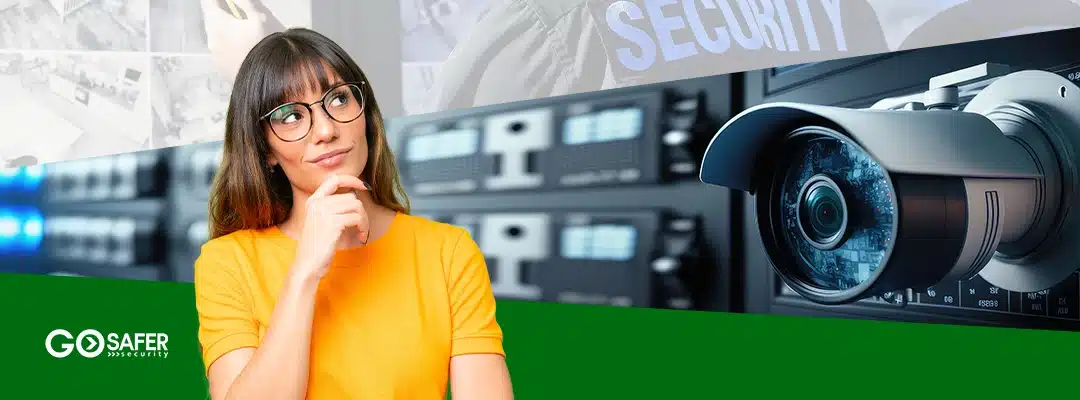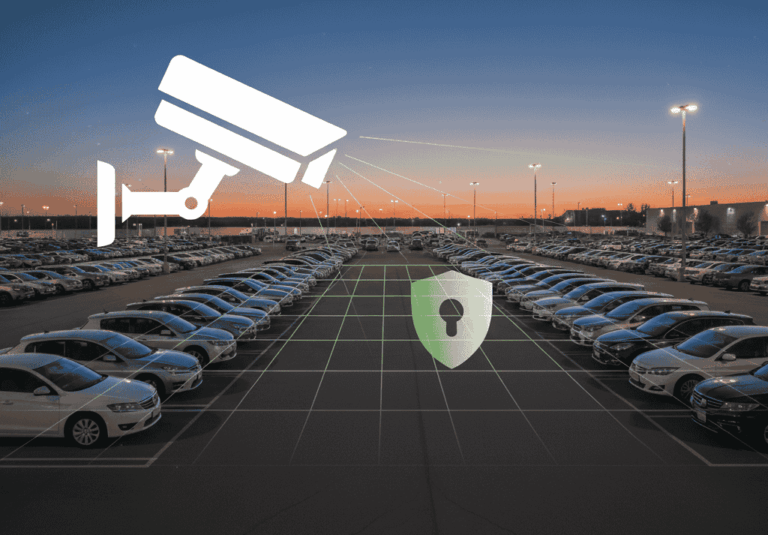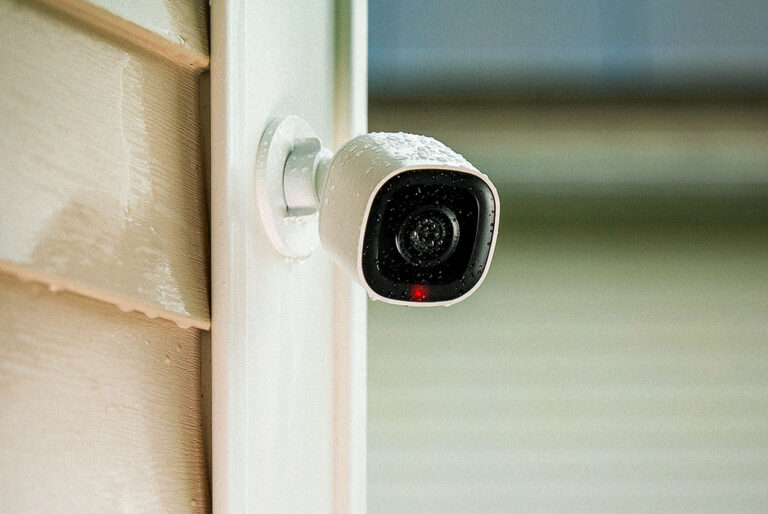The data center world has historically been plagued by the potential threat of malware, whether that is applied to physical or virtual devices. Now, however, there is also another potential threat to data centers: crime.
Think about it: Data centers are like towering complexes in which hundreds of thousands of dollars worth of equipment, information, and sensitive data are housed. What will happen if one of those data centers is broken into? All sorts of information could be stolen, including credit card and employee information. Hackers could even use the information to break into other networks, affecting other companies and even governments.
It’s time to put safeguards in place to protect your data center, both from hackers and would-be burglars. Take a look at why data center security must include video surveillance and why it is an important perimeter security tool, and get a brief overview of how video surveillance works in data centers.
Table of Contents
ToggleWhat is Data Center Security and Why is It Important?
Data center security is extra important because of the sheer amount of information stored in data centers. Hackers have every right to be concerned about all the details that you entrust to them, so keeping data centers secure is a huge part of IT.
Data center security is about so much more than just a locked door. It’s a combination of layers, each working together to prevent unauthorized access, cyber theft, and disruptions. In a time when cyberattacks can seem plausible or effortless, protecting data is a must, even for big companies.
From not letting unauthorized workers know where the data center’s server room is located to just having some steep passwords data centers work hard to protect themselves, and you.
How Video Surveillance Can Improve Data Center Security
According to Ponemon Institute, 69% of data breaches originate from internal sources, with 23% involving human error, 13% malware, and 12% phishing emails. 11, 12 So, how can a company combat these internal threats? Through video surveillance.
For example, one of our project managers needed to leave to go off-site. He forgot to turn the temperature in his office down because he wasn’t feeling well. When he arrived, it was hot enough to cook an egg on his desk. This could have been prevented by installing security cameras.
The cameras continuously record video, and when the project manager arrived, he could see exactly what was going on (later, we installed motion-activated lighting, as well). Meanwhile, our security team was able to log in remotely and watch the footage in real-time.
How does video surveillance improve data center security? Some customers will take advantage of our in-camera two-way communications, for example, notifying us of suspicious activity.
And remember, the data center managers could enjoy the same peace of mind without cameras throughout their facility, knowing that surveillance that those cameras provide is managed and maintained by a professionally-assured team.
Understanding the Need for Video Surveillance in Data Center Security
Since data centers house our favorite electronics and banking institutions’ sensitive data, these data centers and their components need to be serviced, monitored, and maintained with the utmost privacy and security.
Data centers also need to be protected from the threat of theft, a very common problem that can result in catastrophic damage to a company’s revenue, not to mention a big-name hit to a company’s reputation. Therefore, when designing a data center, data center hardware, cooling and irrigation systems, and other such elements need to be of the highest quality, suitable cameras must be placed in and around the equipment to provide real-time surveillance, continuously keeping an eye on what’s going on in and around the data center.
While this may seem like a no-brainer, this is often not the case with many companies, experts say.
A data center security firm, Securonix, examined the video surveillance usage of over 40 well-known Fortune 500 companies to understand where most of the money is going and how efficient their surveillance practices are.
From that data, they came up with some interesting conclusions. First, they found that 81% of organizations do not have executives who are in charge of overseeing surveillance. However, these organizations still monitor close to 16,000 cameras and place 86,000 cameras on the premises.
In addition, only 20% of executives were concerned with risk and consequently had a good idea of where threats were coming from. But, the organizations were placing almost 1,000 cameras in areas where there was no risk of burglary, raising the question if the cameras were merely serving as a source of a deterrent or if they were being used to catch the burglars in the act.
A data center needs to be both cost-effective and provide the right amount of security for the data it is holding and the software it is running. Essentially, they both need to work together to provide an ideal solution to update, protect and maintain a company’s servers, storage devices, routers, and firewalls in a secure environment.
But what role does surveillance play for some of these companies? To find out, researchers examined the video surveillance usage of over 40 well-known Fortune 500 companies to understand where most of the money was going and how efficient their surveillance practices are.
They found that most video solutions are being utilized to improve employee, customer, and vendor experience, oversight, asset management, and streamlining warehouse processes – not necessarily for crime prevention or security. Companies were seen investing heavily in surveillance technologies to monitor the daily movements of employees, but keeping an eye out for unusual activities and suspicious behavior was less common.
The findings suggest that although video surveillance can help improve efficiency and productivity, companies need to focus more on using video tech as a security tool – such as through authentication, access control, and advanced analytics – to help protect their assets, customers, and staff. In this way, they can reap the benefits of surveillance while also preserving individual privacy rights.
Tips for Installing and Using Video Surveillance in Data Center Security
Here are some tips for installing video surveillance for your data center:
-
Make sure that there’s an allocation of resources to monitor your security footage. This can be a person, an analytics program, or a combination of both.
-
When selecting security monitoring software, make sure that it provides notifications.
-
Select surveillance hardware that can be monitored from the software.
-
Rotate the camera location frequently.
-
Spread cameras evenly through the data center.
-
Minimize camera blind spots.
-
Keep cameras out of direct sunlight.
-
Don’t cover the entire data center with a dome camera. This can cause blind spots in the video surveillance system.
The Benefits of Incorporating Video Surveillance in Data Center Security
Surveillance isn’t just for seeing who stole the cookies. For businesses, the bottom line is surveillance can save lives and money, not to mention help prevent lawsuits.
Here are four of the many benefits of incorporating video surveillance in building security:
Helps with employee retention: Having video surveillance can help ensure that staff members are handling their duties properly. Even if there’s proof that someone was in the wrong, it won’t matter unless you can demonstrate that the employee has been negligent. Video evidence documenting problem behavior may be useful in disciplinary actions as well.
Helps reduce claims: Video surveillance may help prevent instead of allowing workers’ compensation claims. Video footage may protect our businesses from claims of unfair practices, especially in claims involving sexual harassment.
Prevents theft: Video surveillance assists with identifying potential fraudulent behavior, such as customer complaints of stolen merchandise or damaged goods. Video surveillance can also help an employee from being falsely accused of theft.
Identifies problem areas: Sometimes you need a villain to identify what needs to be addressed. This requires continuous surveillance with an objective eye. Should trouble be found, video surveillance identifies problem areas that need to be addressed right away, thus putting the problem before the problem, so to speak.
Video surveillance can even help prevent damage due to natural disasters. For businesses, this might include a fire or even a power outage. When there’s a disruption to the power supply, a surveillance camera that can be configured to record in black and white may be your best bet, especially if most of your business-stored digital files can easily be transferred to a high-quality solid-state hard drive or flash drive.
Exploring the Risks of Not Including Video Surveillance in Data Center Security
Extensive and varied, security threats to data maturity and security exist at every level in IT infrastructure, from data centers to end-user devices and endpoints. They can come from many sources and can be quite diverse in form, impact or target.
Threat Prevention: This refers to the tools, technologies, procedures, and education aimed at reducing the vulnerability of data centers.
Threat Detection: This refers to the tools, technologies, procedures, and education used to monitor and observe a data center to identify specific threats.
Threat Mitigation: This refers to the tools, technologies, procedures, and security personnel used to preserve data from threats that are detected.
For effective and comprehensive data center security, all of these elements must work together to prevent a company’s valuable data assets from being unintentionally or maliciously accessed, lost, or destroyed. Video surveillance has the ability to provide crucial elements of each of these security areas, but is often overlooked by facility managers and IT staff alike.
Analyzing the Cost-Benefit of Utilizing Video Surveillance in Data Center Security
There are two big benefits to utilizing surveillance cameras in a data center. If you want to make sure the people looking after the servers are safe, you can easily monitor the activity, and, if things don’t look good, you can alert the authorities to intervene as soon as possible.
Additionally, video surveillance cameras can be used as a deterrent for would-be intruders, especially if the cameras flash and alert the authorities automatically.
CCTV video cameras can also point out areas of concern visually, which helps to pinpoint potential problems which could weaken the security of your data center. However, there are a few disadvantages to surveillance as well, as video surveillance cameras only record video data, so there is a finite amount of data recorded every time the cameras are turned on.
There can be drawbacks to having large continuous footage files, especially if there isn’t enough disk space or bandwidth to stream the data. Additionally, security is a vital concern in any data center, and selecting the wrong surveillance system could cause reliability problems. Finding the right security camera system for your data room is vital. If you have a problem, contact us now!
Conclusion
Data center security must include video surveillance in order to protect the data and ensure the safety of everyone inside the facility. Video surveillance can be used to monitor activity, detect intrusions, and quickly alert authorities if necessary. As one of the premier and trusted video surveillance security providers in Maryland, Go Safer Security can help ensure your data center is well protected. With our advanced technology and an experienced team of security experts, Go Safer Security can customize a video surveillance system to meet your unique needs and provide the highest level of security.







